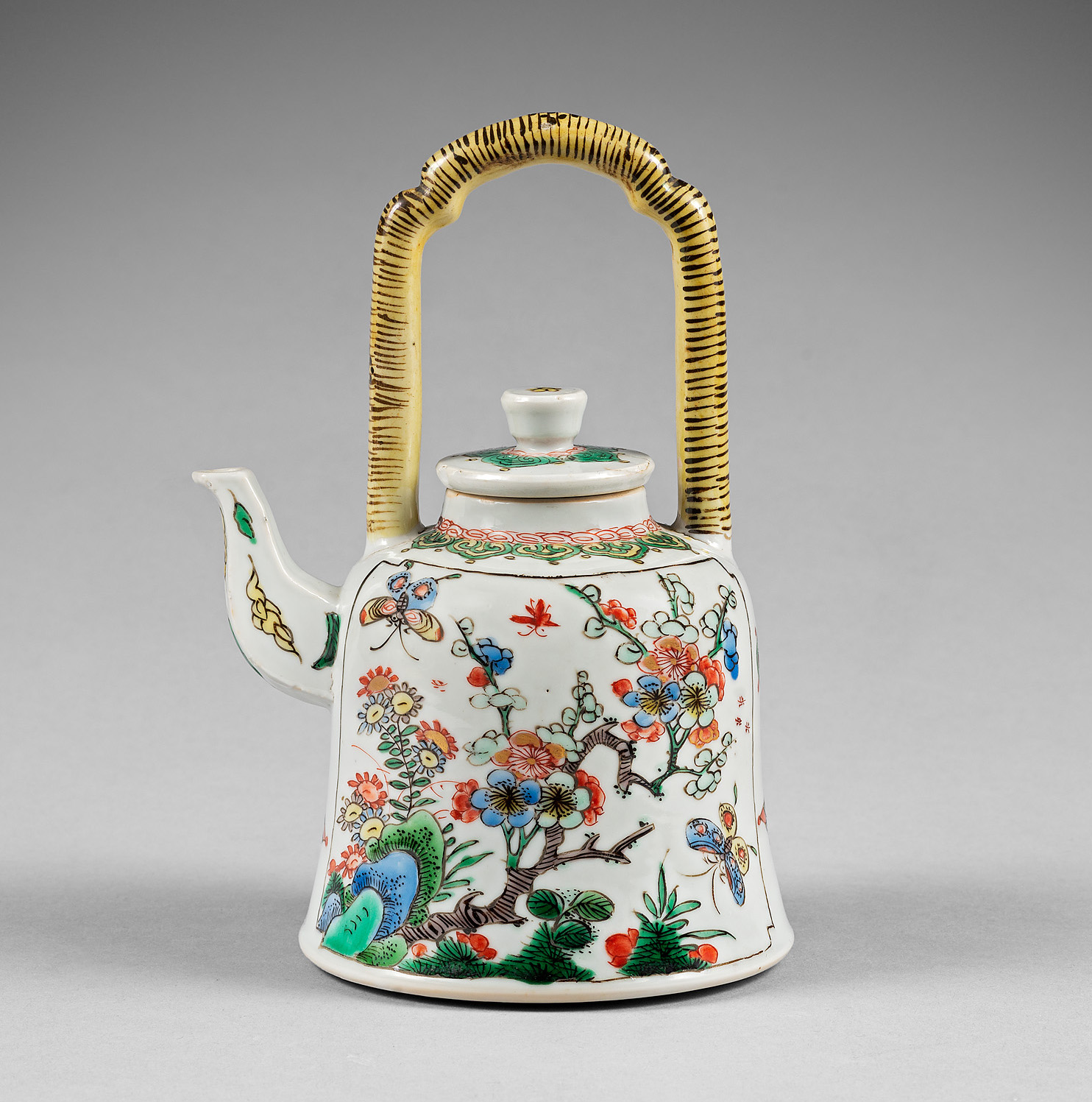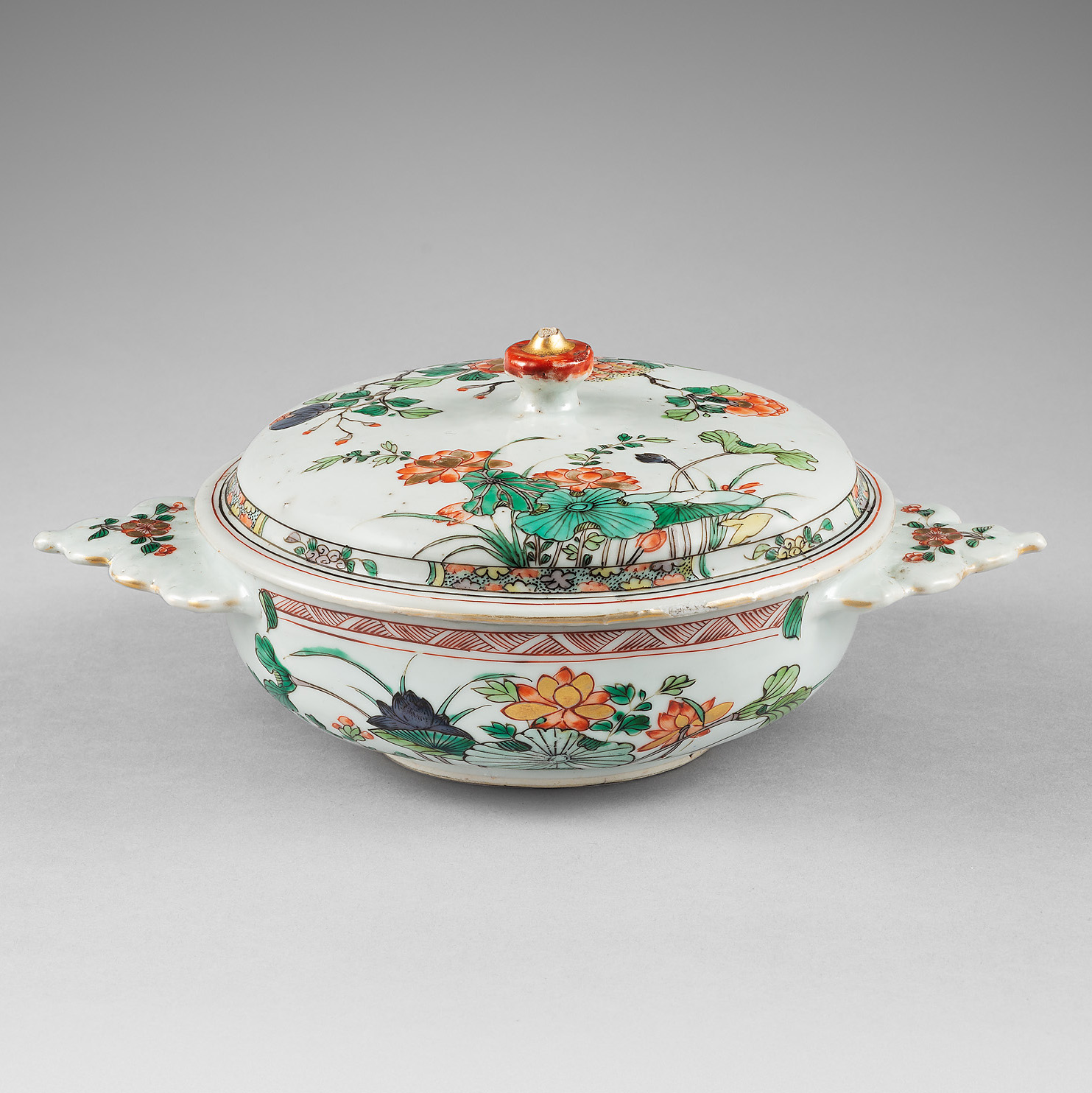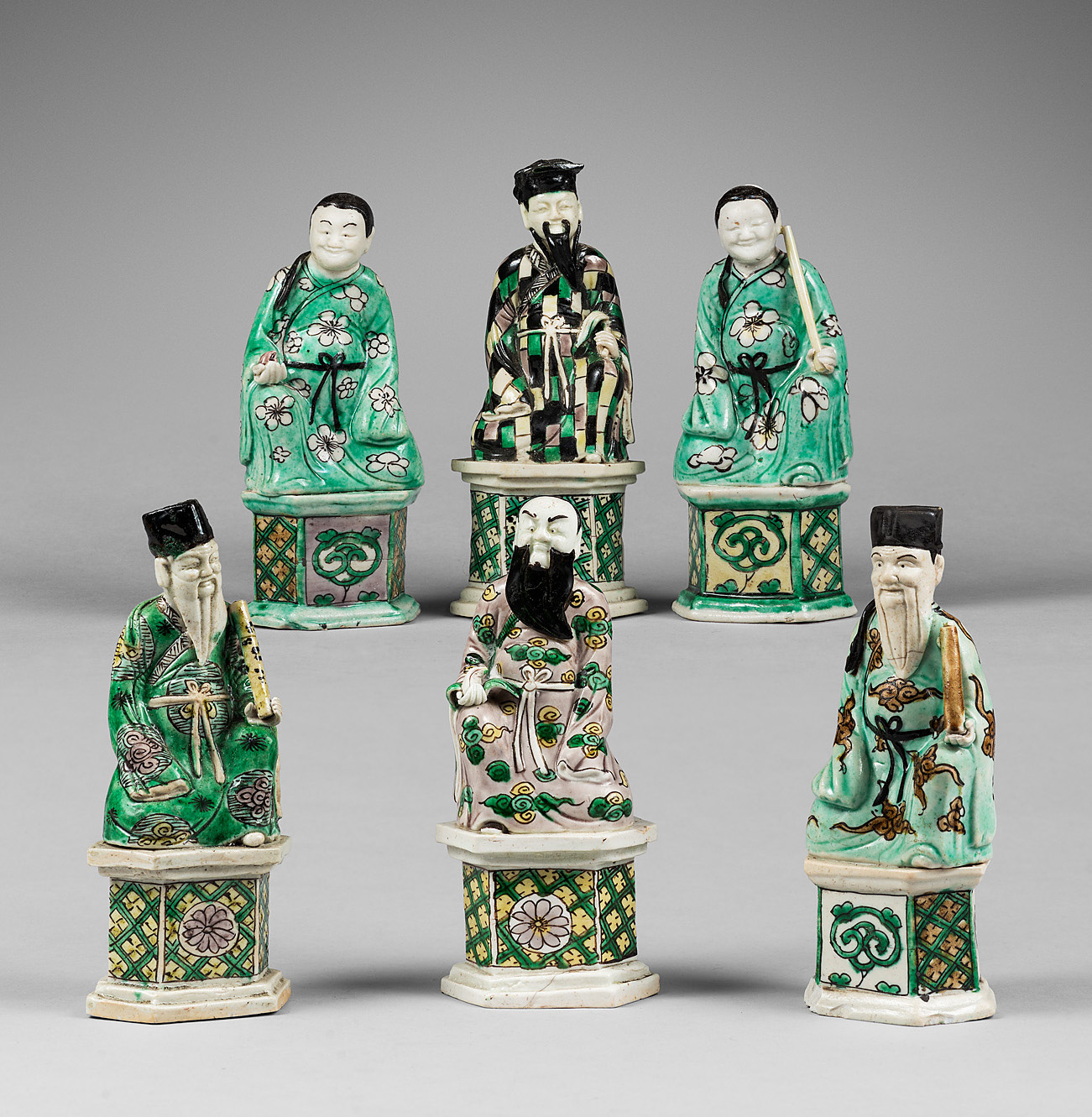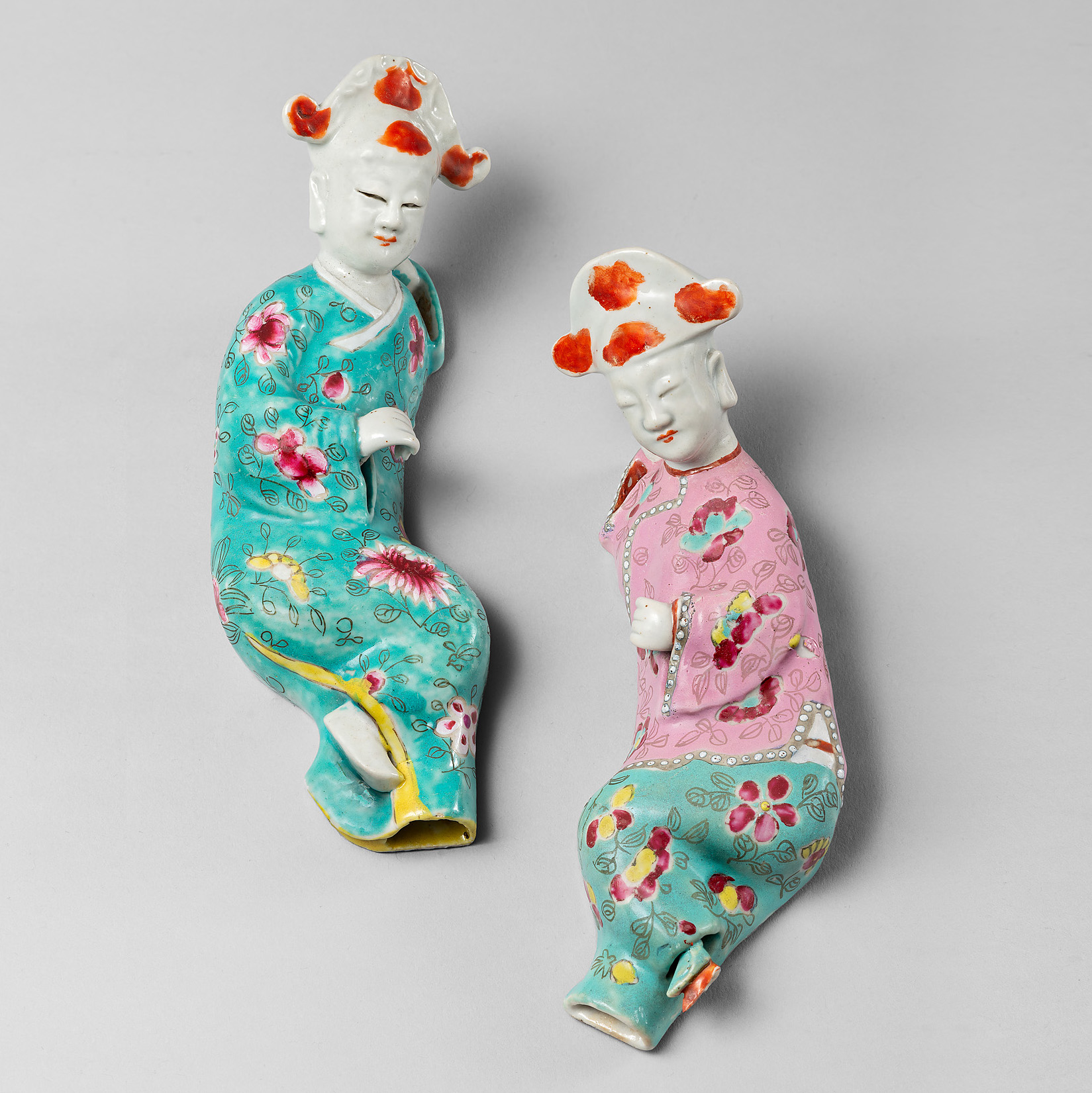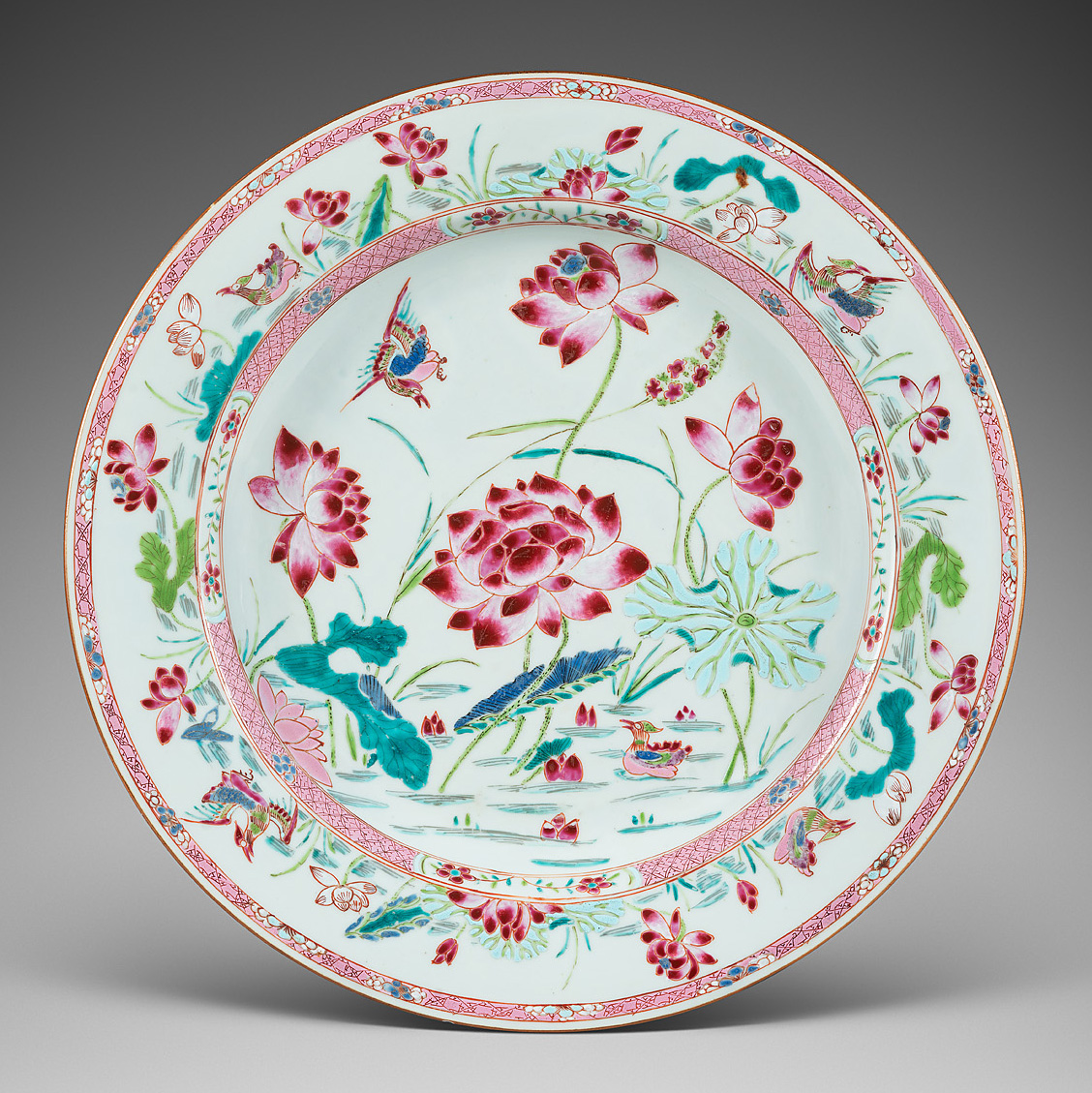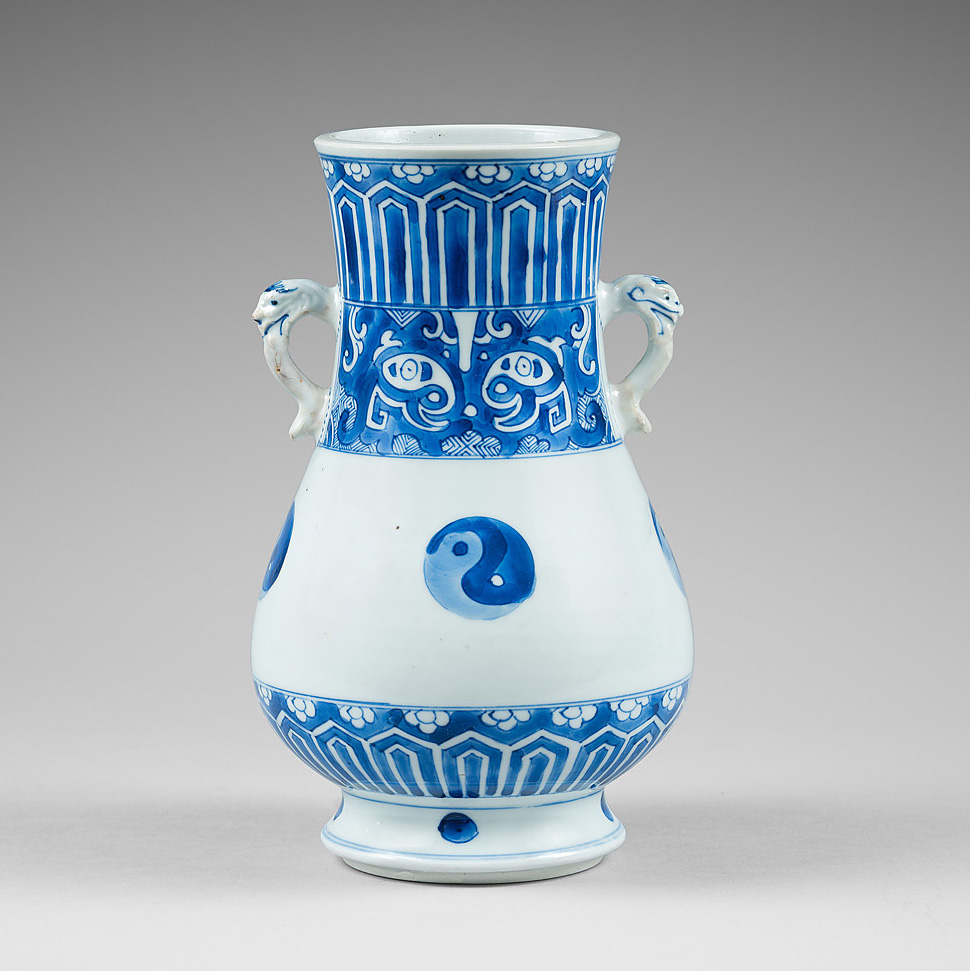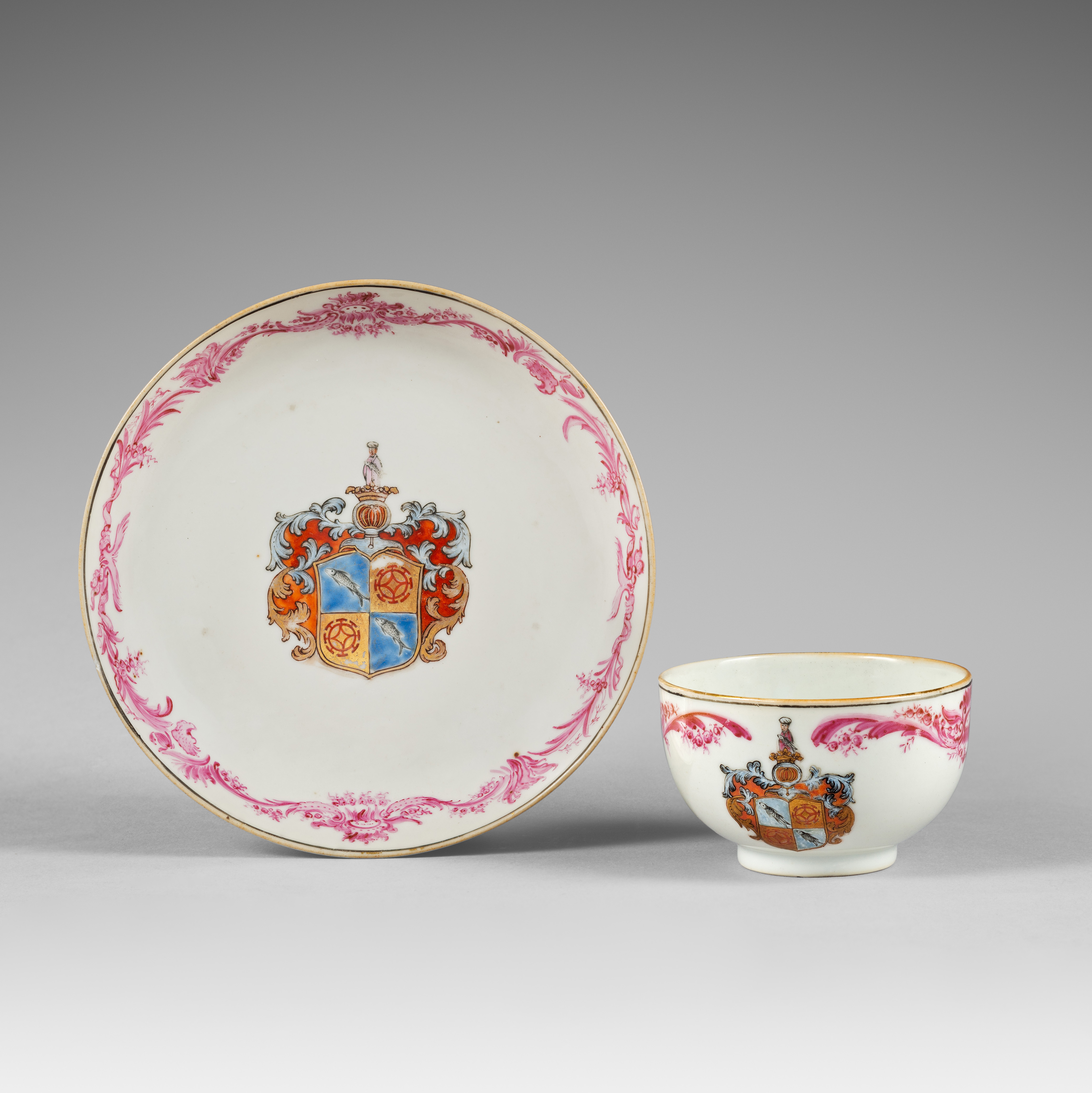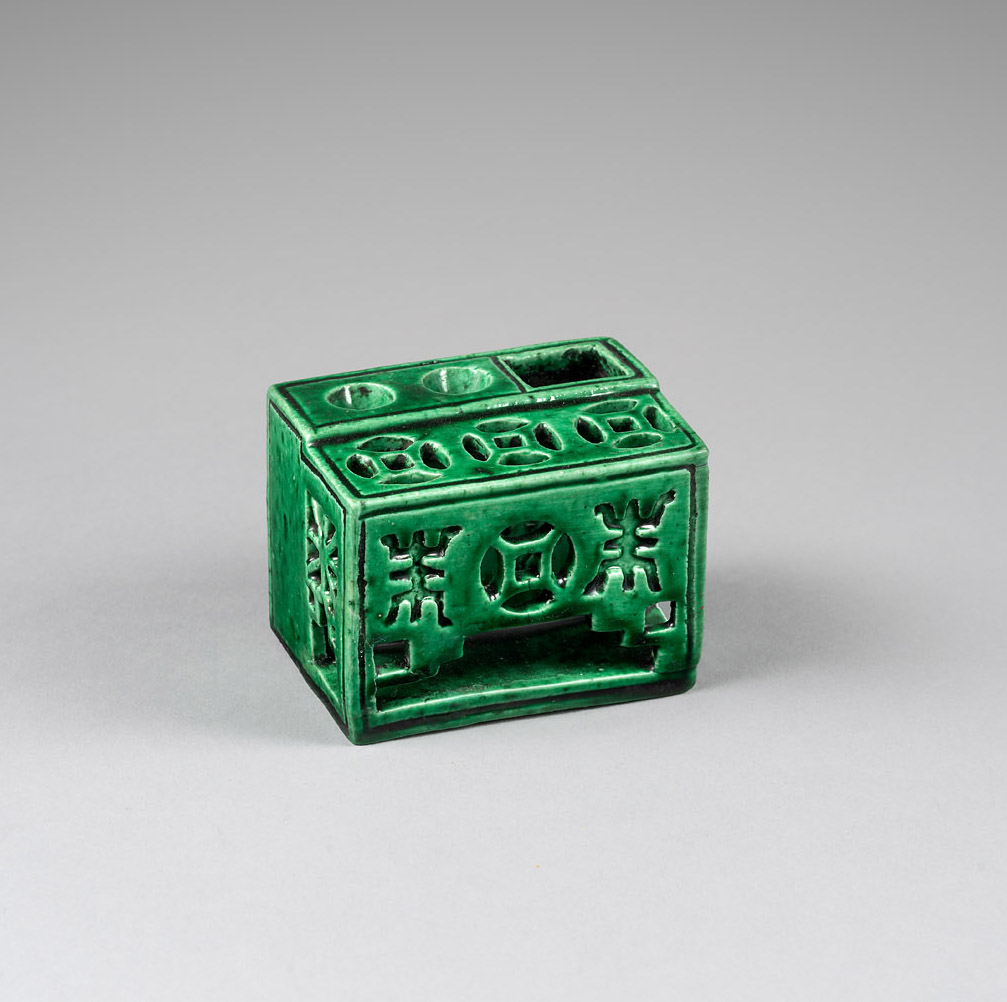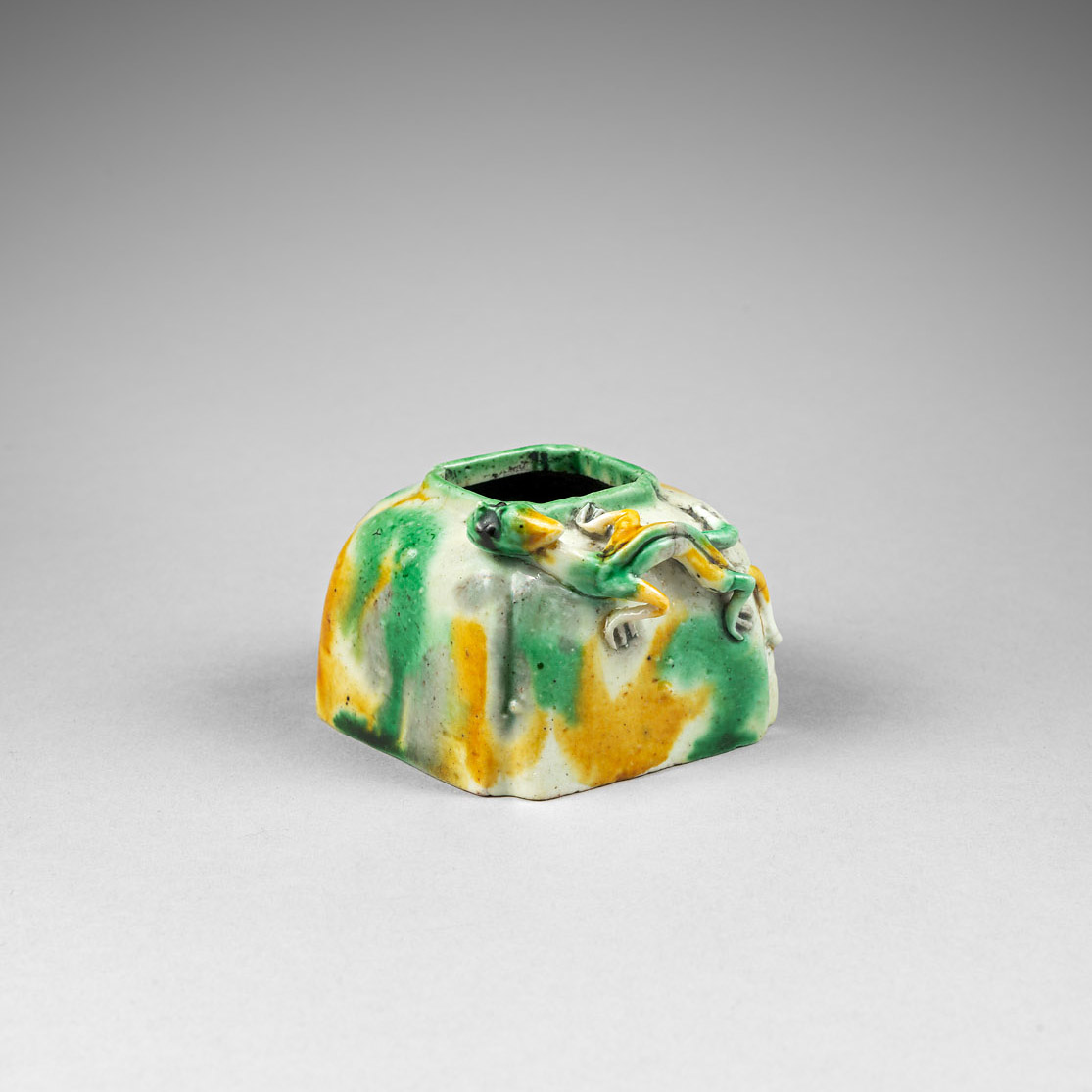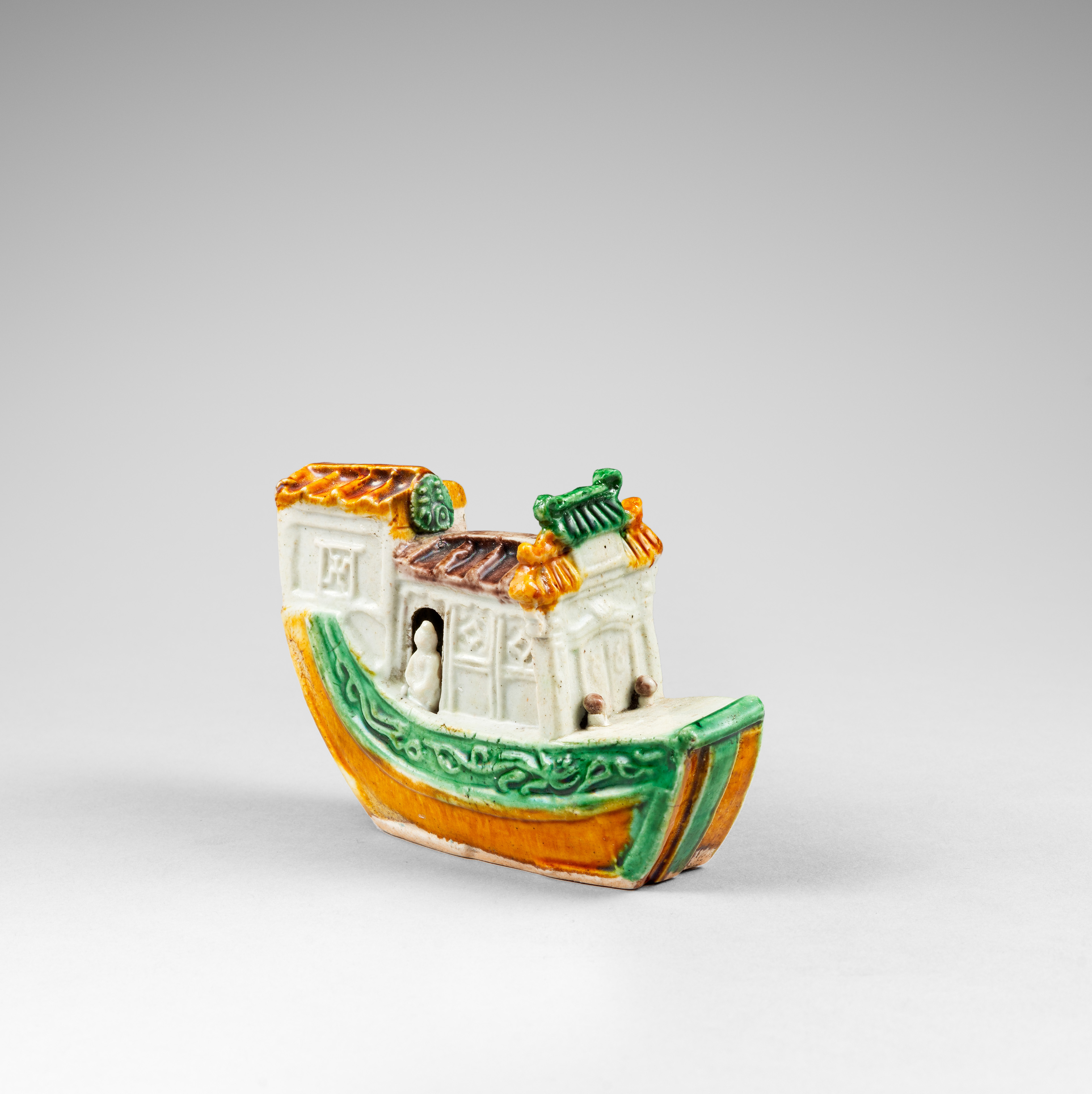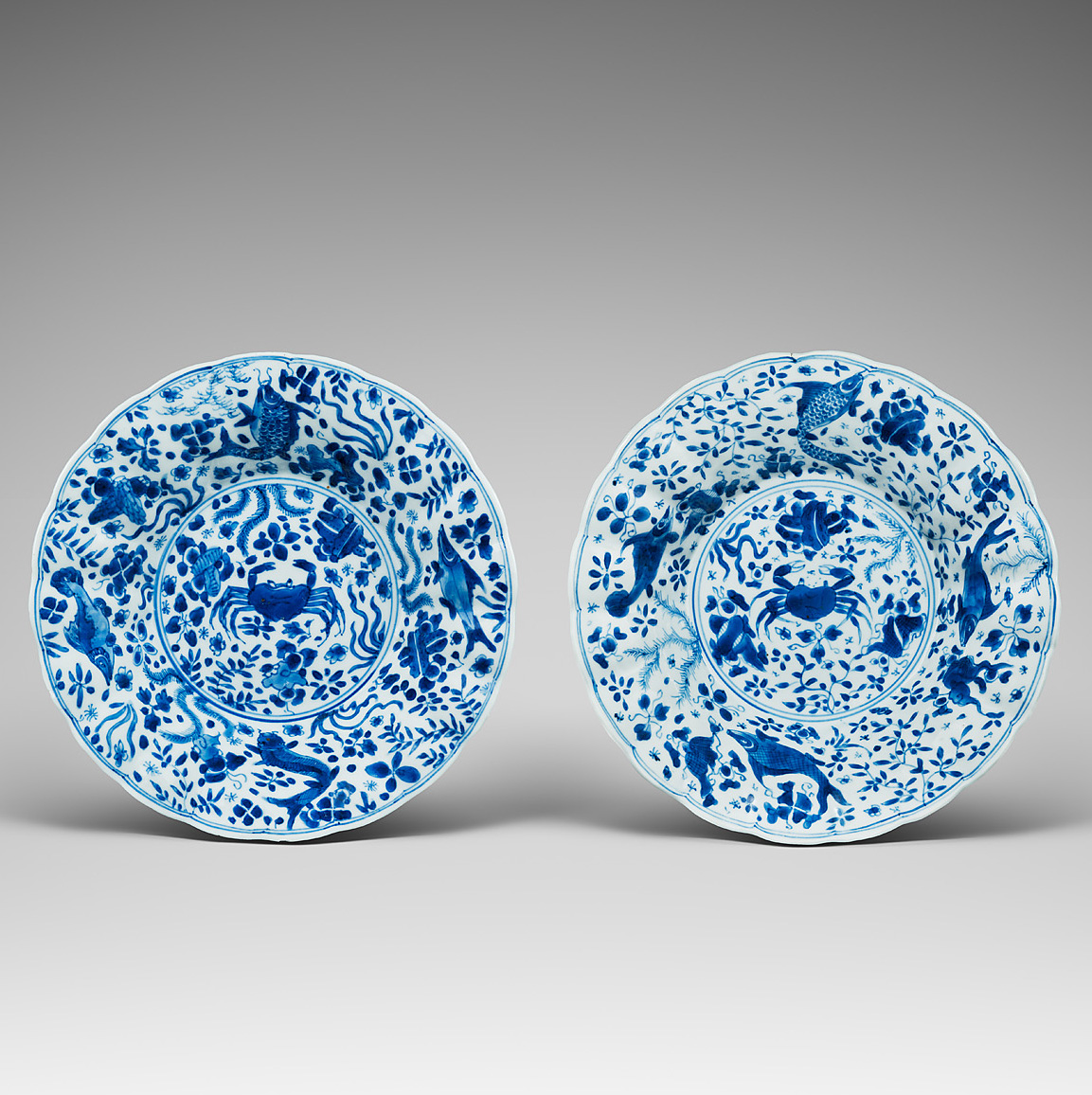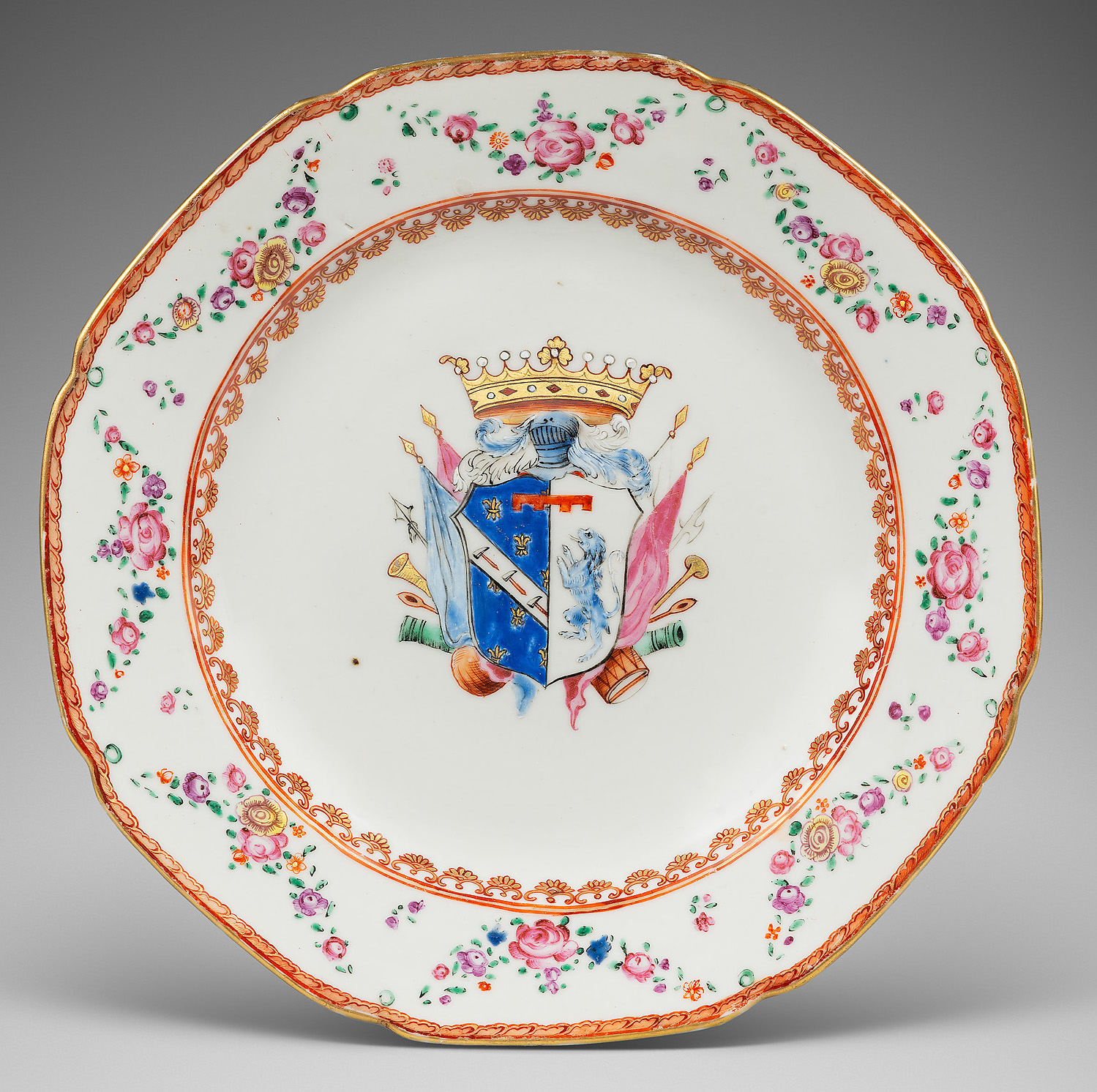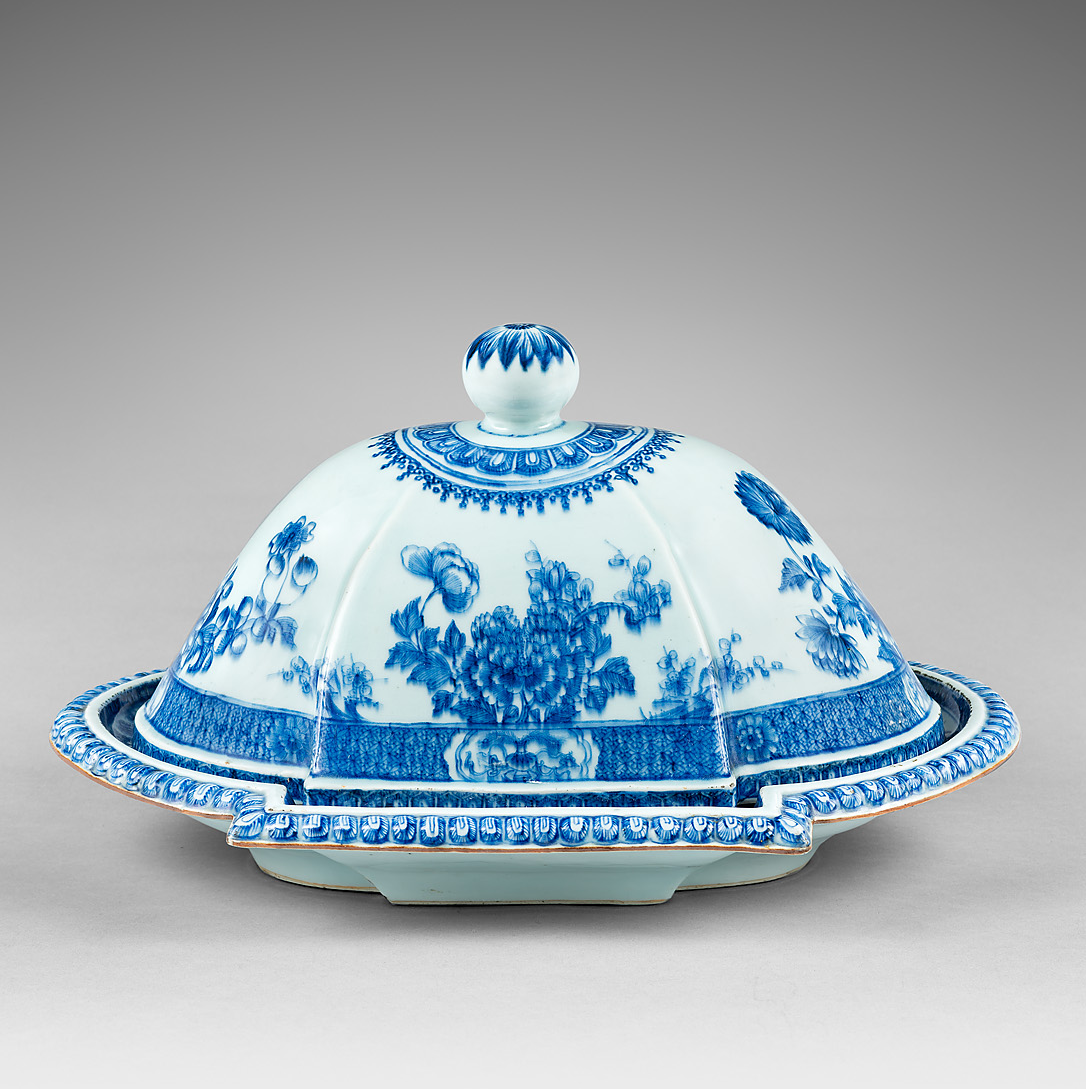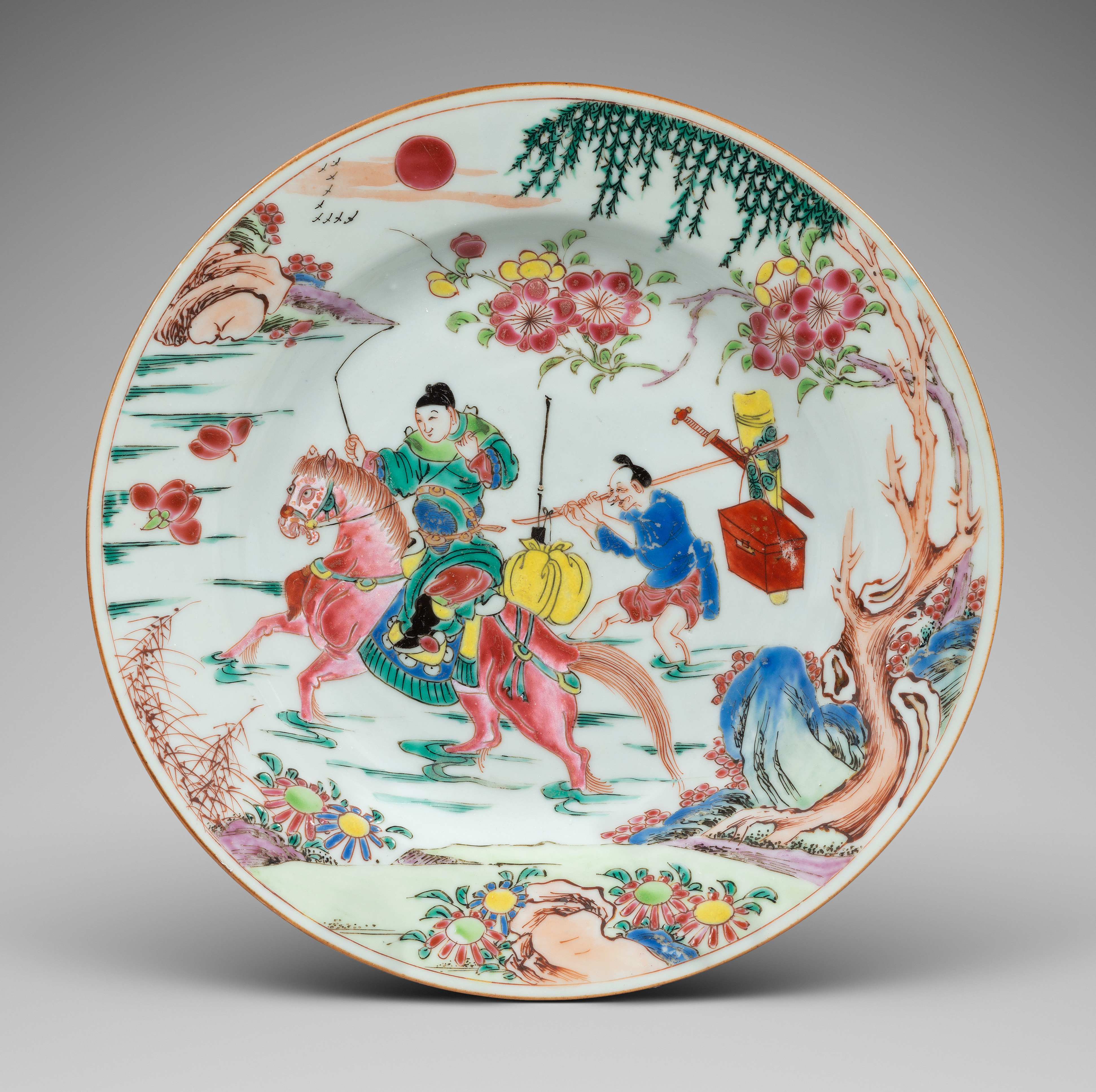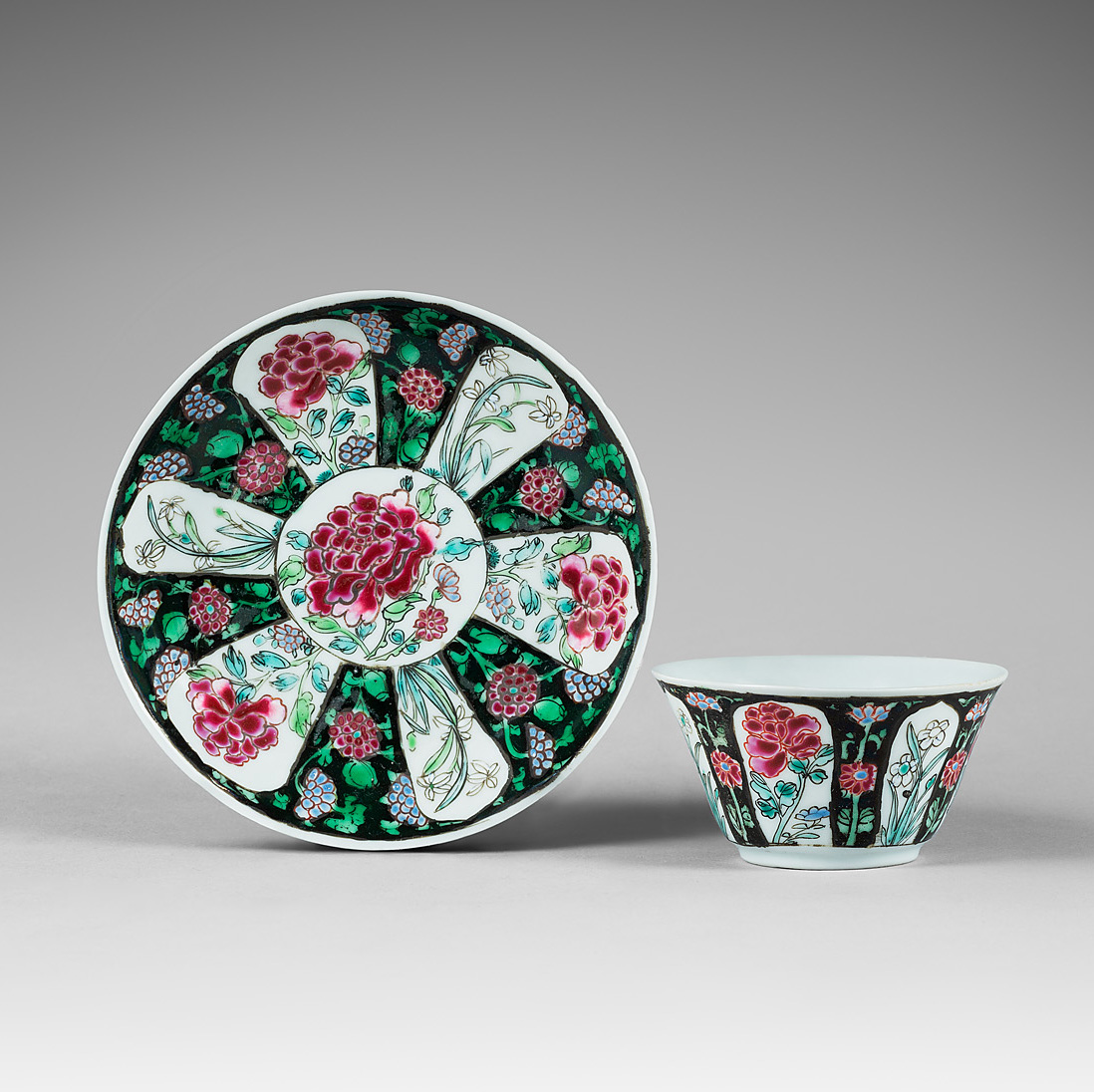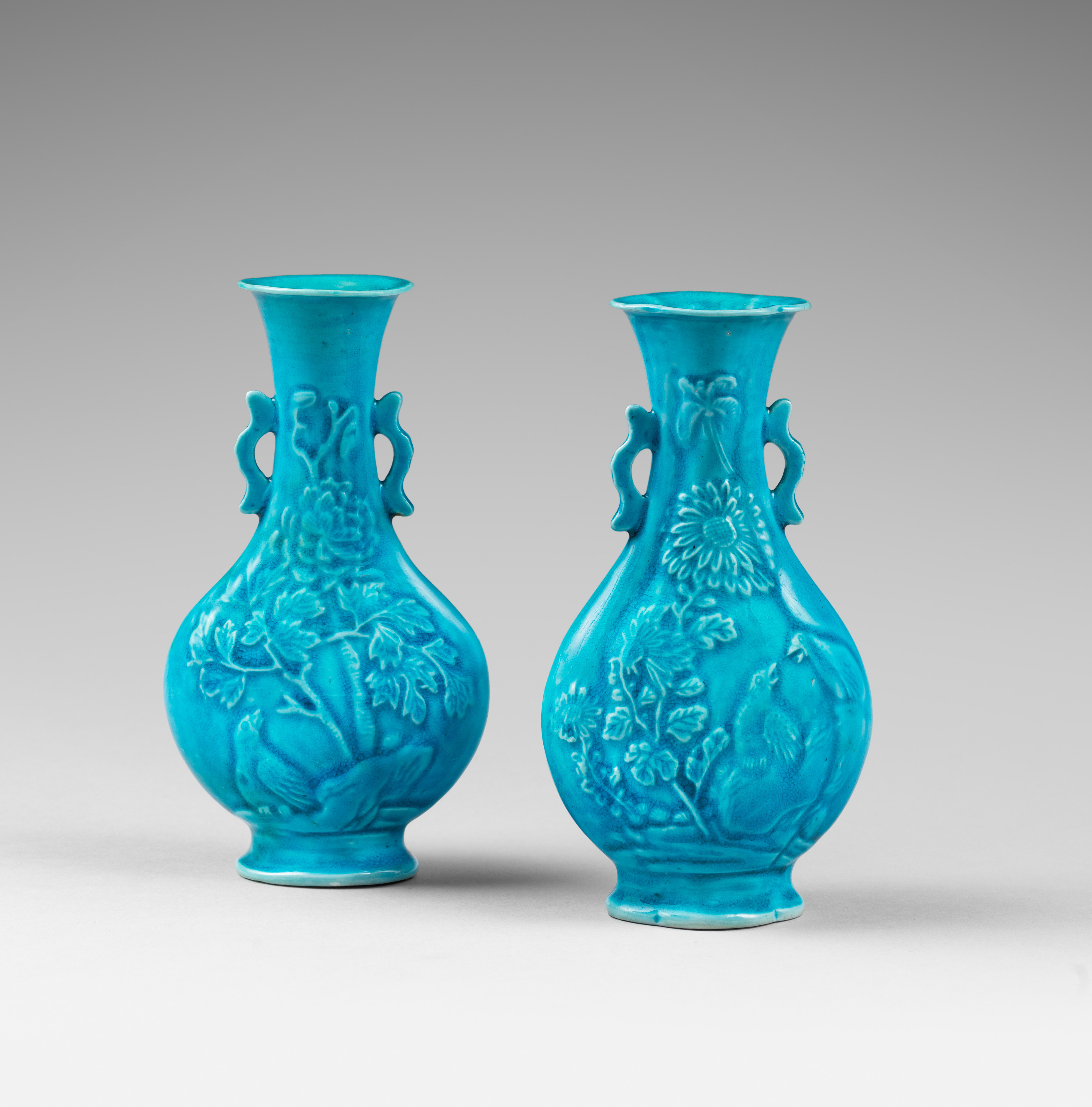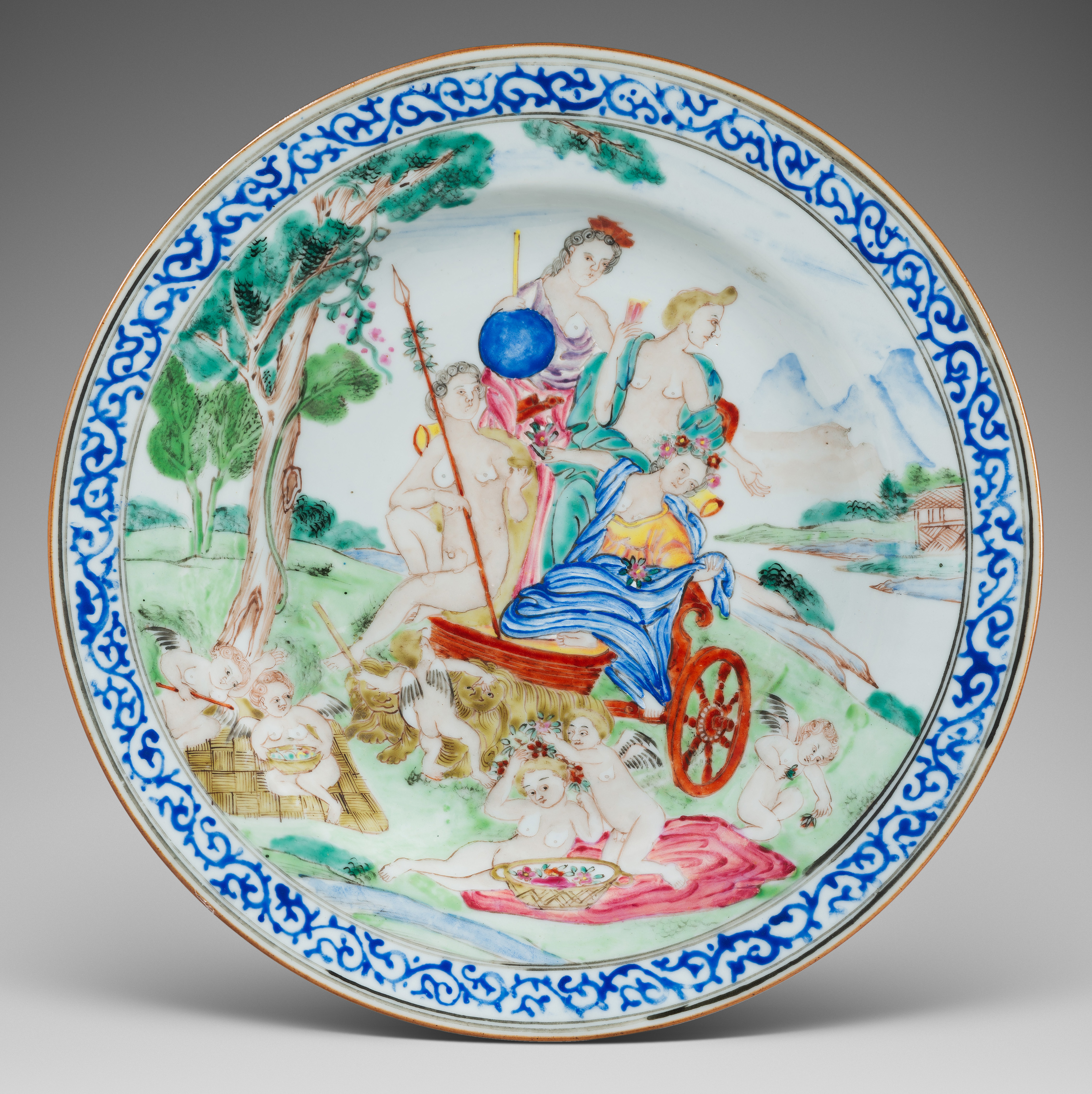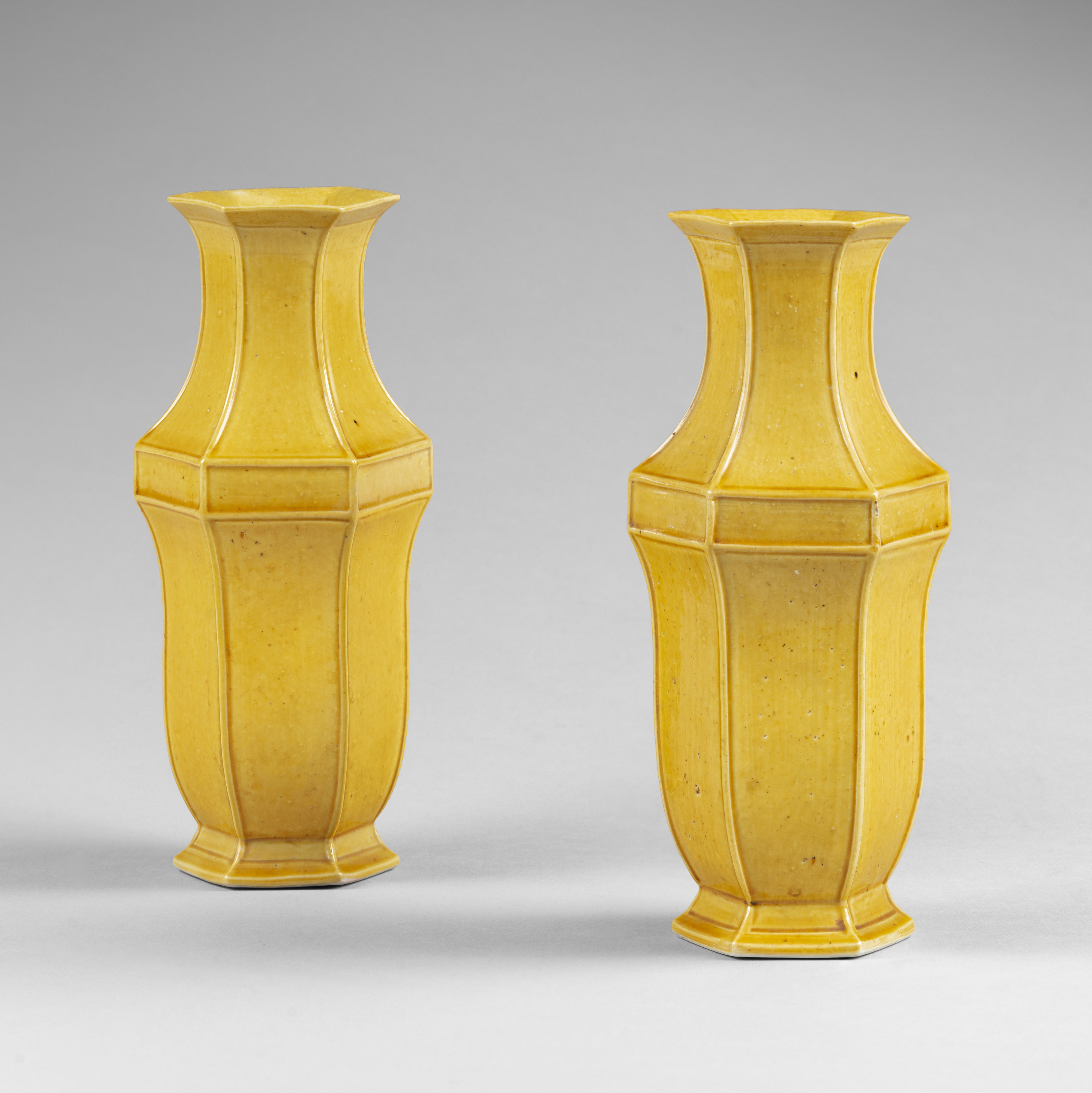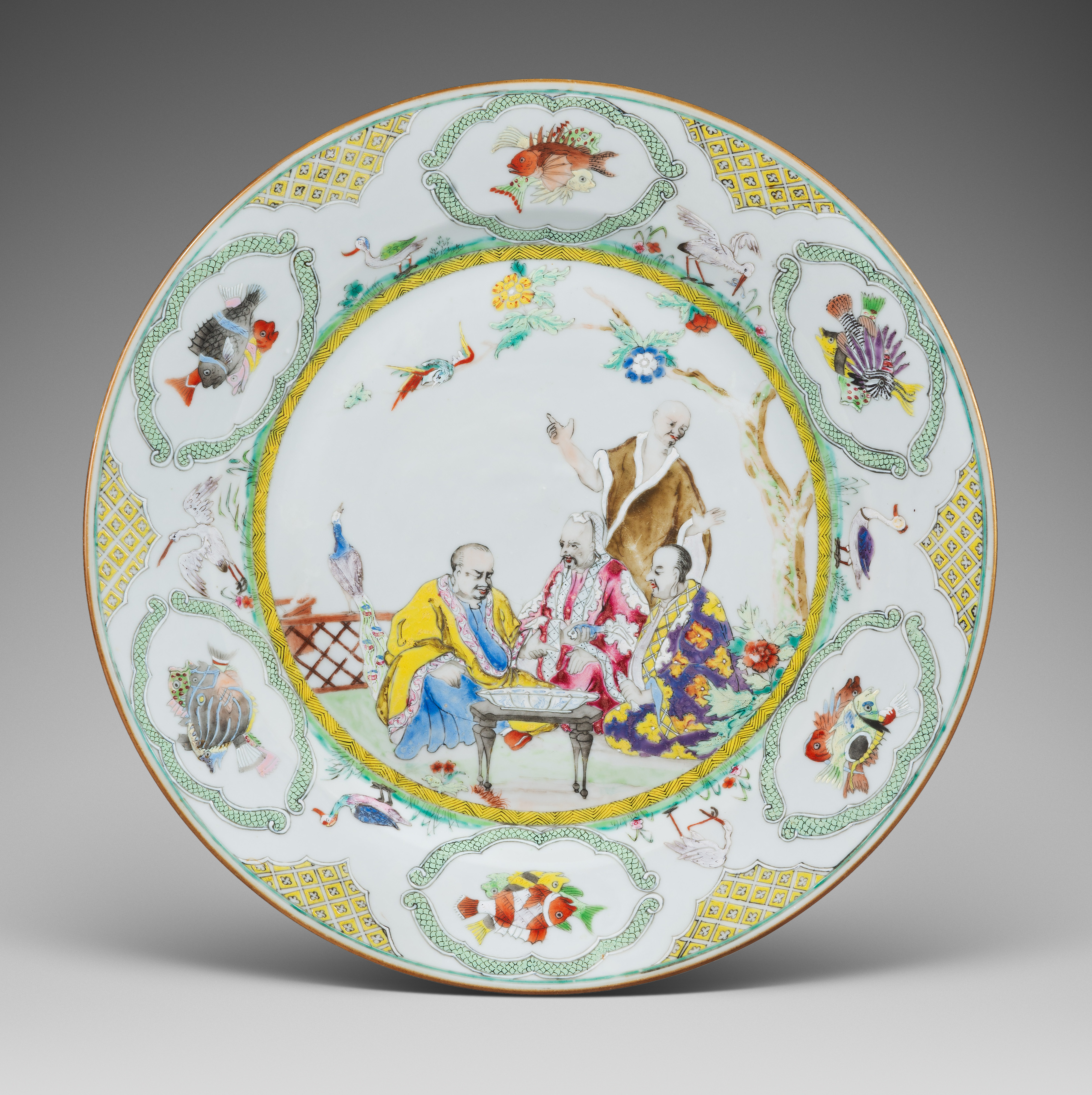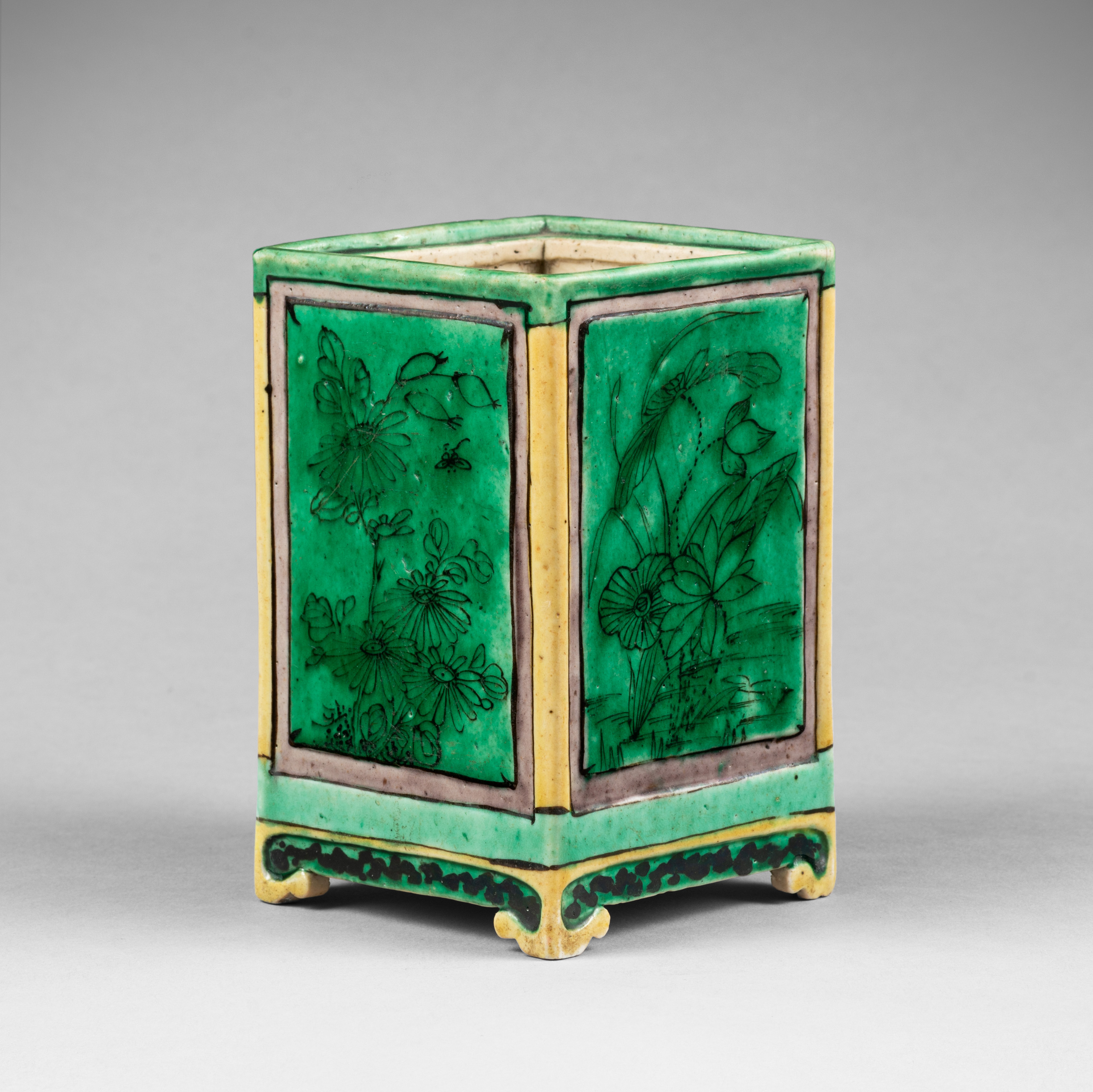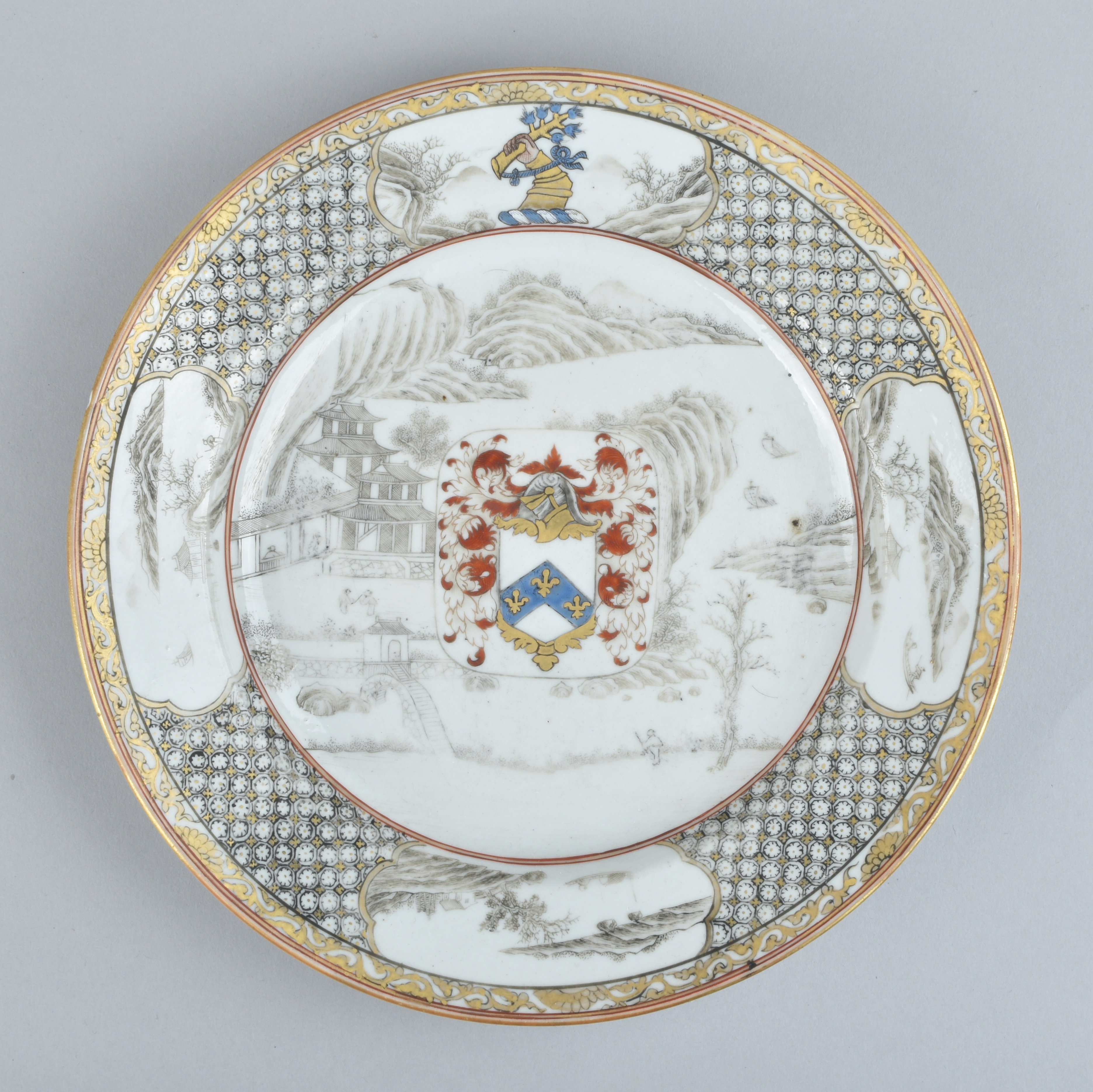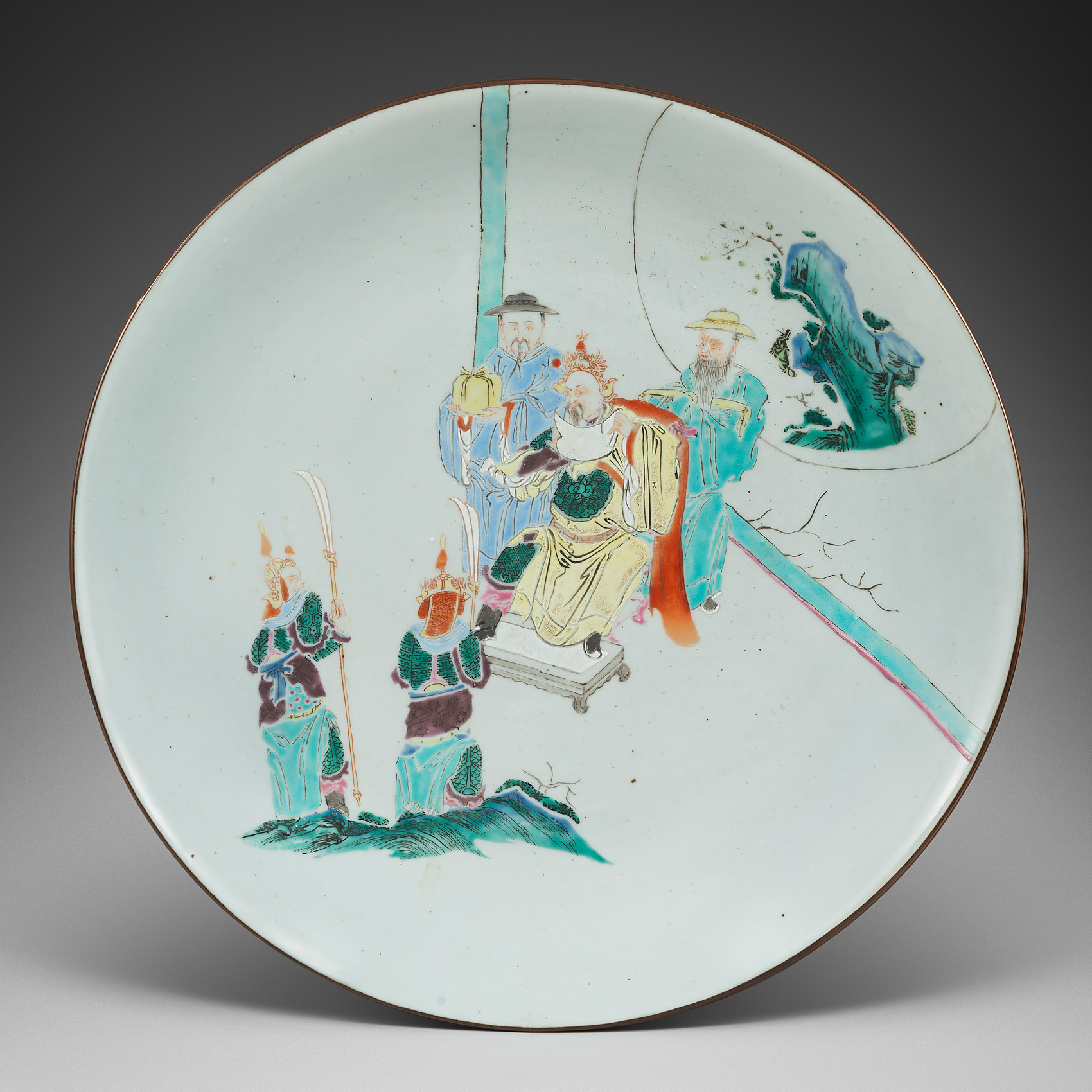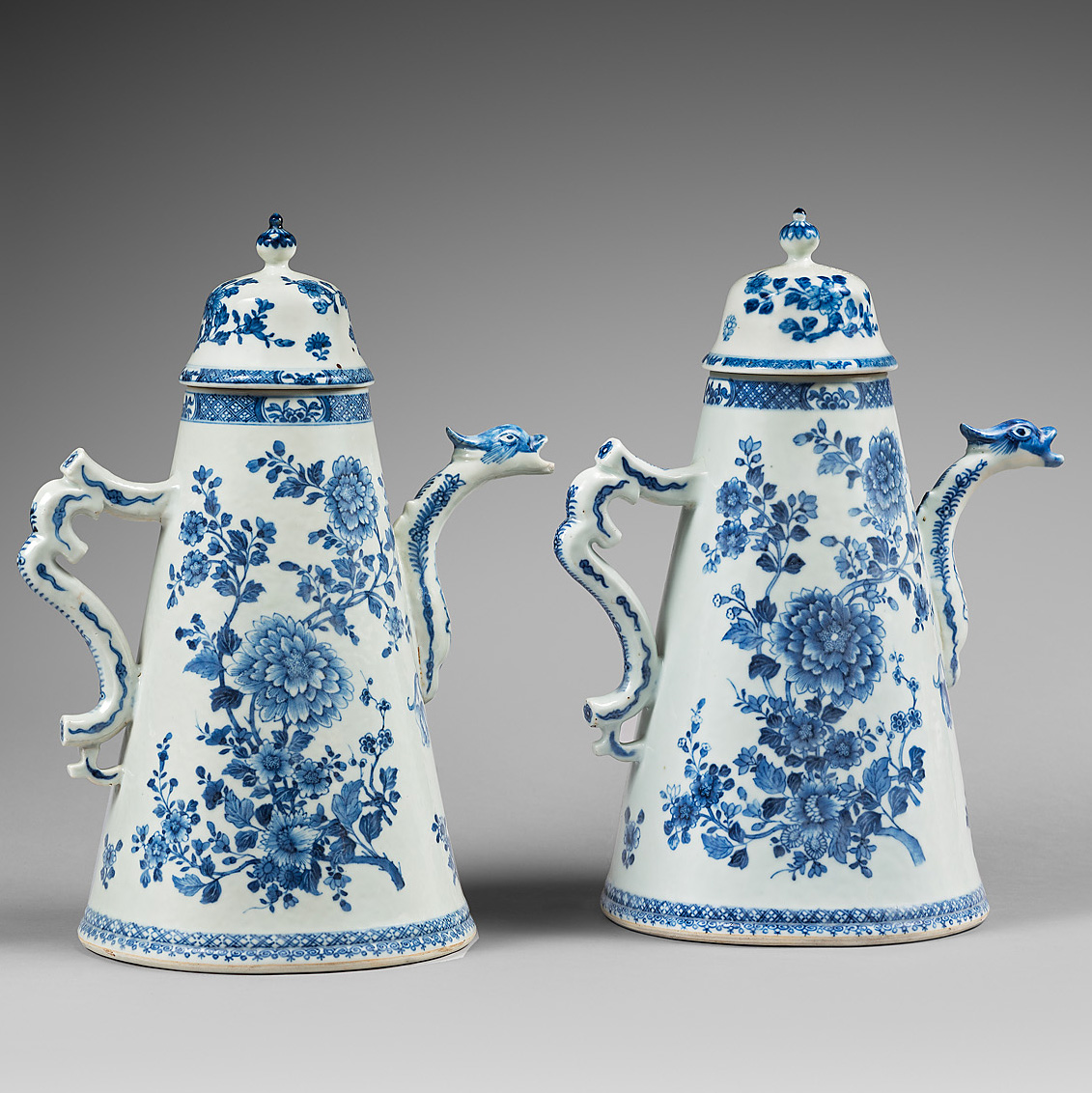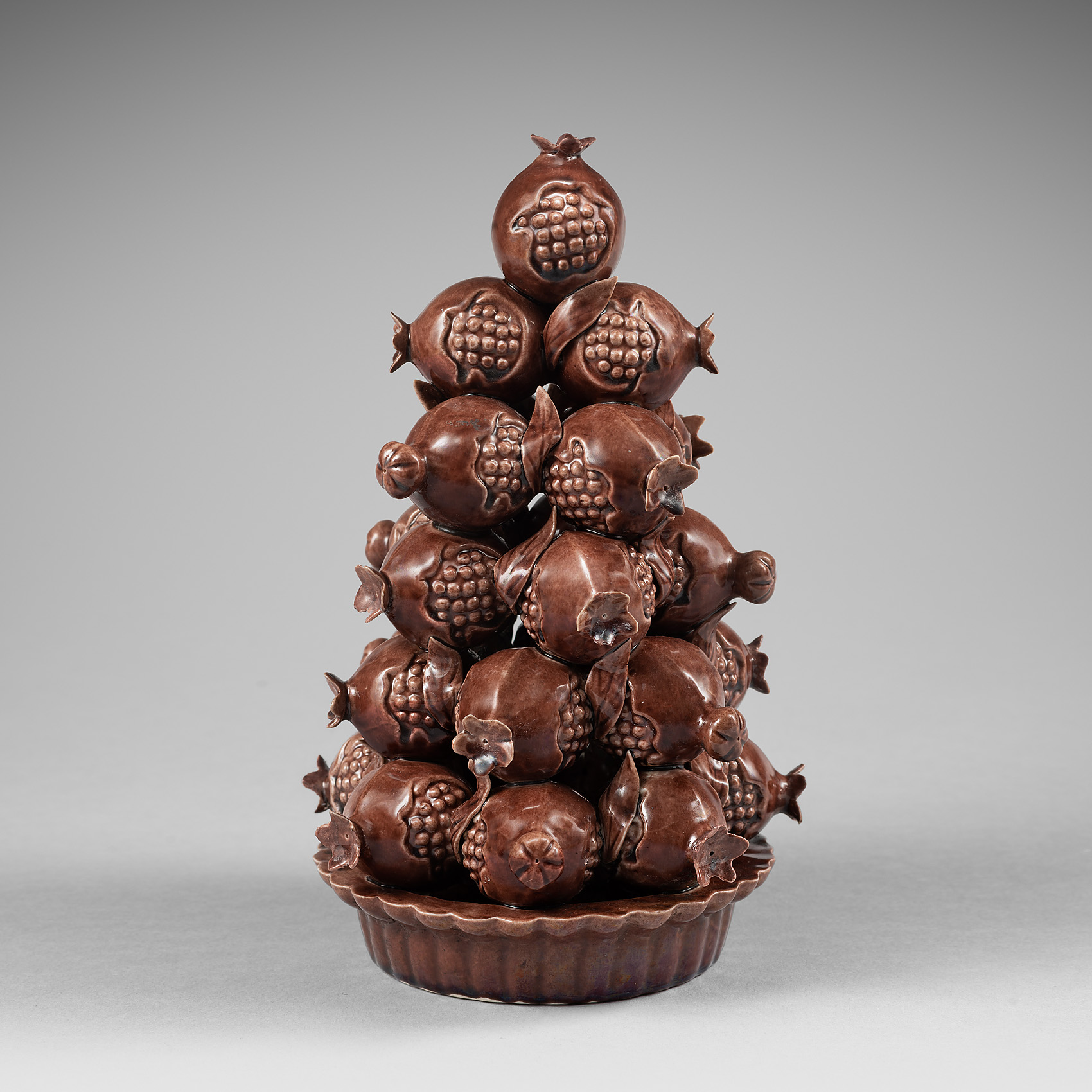
An aubergine-brown glazed pomegranate pyramid. China, 18th c.
The pyramid with naturalistic miniature pomegranates sits on a fluted dish. The fruits are arranged in six layers with leaves added in between. To construct this piece, each pomegranate would have been individually moulded, then arranged layer by layer.
- Country:
- China
- Period :
- 18th c.
- Material:
- Porcelain
- Dimension:
- 8.26 in. (21 cm)
- Reference :
- D646
- Status:
- sold
Related works
For another pomegranate pyramid, see Vanderven Oriental, Sancai – Three colours, 2020, p. 56, no. 13.
A turquoise-glazed pyramid of pomegranates is illustrated by Regina Krahl in Chinese Ceramics – The Anthony de Rotschild Collection, 1996, p. 448, no. 261.
Notice
Commonly called “Chinese apple” in the West, the pomegranate (shiliu) is not native to China, as it was imported from Central Asia, where it was an important staple. This fruit, which was cultivated in China as early as third century BC, was quickly adopted into Chinese culture, especially for its symbolism
As the Chinese character for “seed” (zi) is the same as that for “son,” the many-seeded pomegranate is seen as symbolizing numerous sons who will perpetuate the bloodlines. The word for pomegranate (shiliu) is also homophonous with shimeaning generation, which reinforces the suggestion of generations of off-springs. When the fruit is depicted open, showing its seeds as in the present example, it could allude the rebus liukai baizi, the pomegranate opens and gives a hundred sons.


